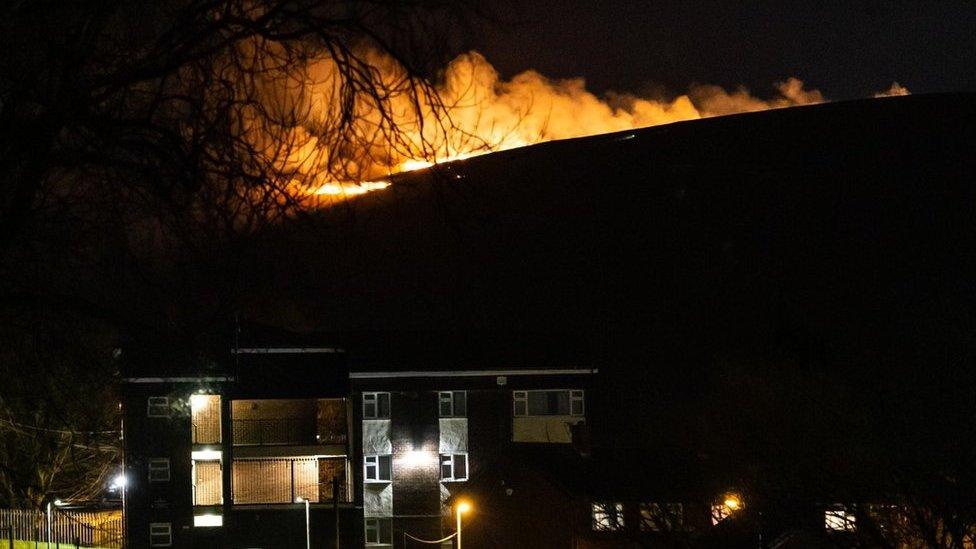Firefighters 'better prepared' for moorland blazes

Firefighters have been training with new equipment on the moors above Stalybridge
- Published
Firefighters are "much better prepared" for moorland wildfires six years after blazes burned for several weeks, a station manager has said.
Greater Manchester Fire and Rescue Service (GMFRS) have been practising using specialist vehicles and new equipment on moorland above Stalybridge during a training exercise.
Habitat is still recovering after devastating fires above Stalybridge and at Winter Hill near Bolton in 2018.
Martin Cain from Stalybridge and Hyde fire station said crews would be able to get much closer to any blaze now and attack it "far more efficiently".
GMFRS has created specialist wildfire teams and bought new equipment including mobile units with caterpillar tracks - like a tank.
Money has also been spent on Forced Air Firefighting Units, which are used to blow air on the fire and push back the flames to prevent the fire spreading.
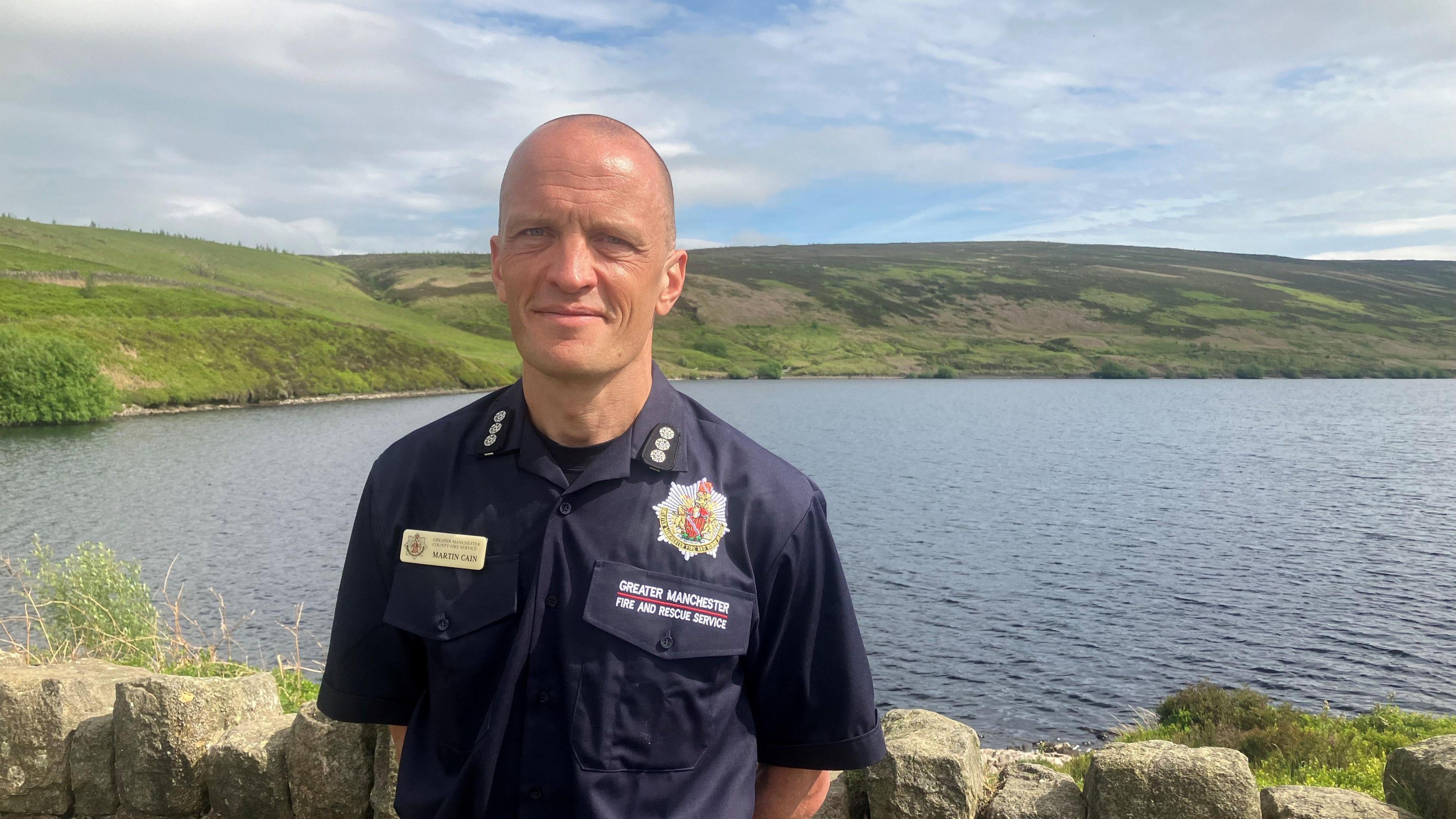
Firefighter Martin Cain is the station manager at Stalybridge and Hyde
Mr Cain, from Stalybridge and Hyde fire station, said: "We have developed using the resources we've got now.
"We've invested in new equipment and training.
"We've got specialist vehicles that get get right on to a fire.
"In the past, we've struggled to get anywhere near a wildfire.
"It just means the speed of the attack is far more efficient. We're right on it very, very quickly.
"These days we are much better prepared to tackle a moorland wildfire."
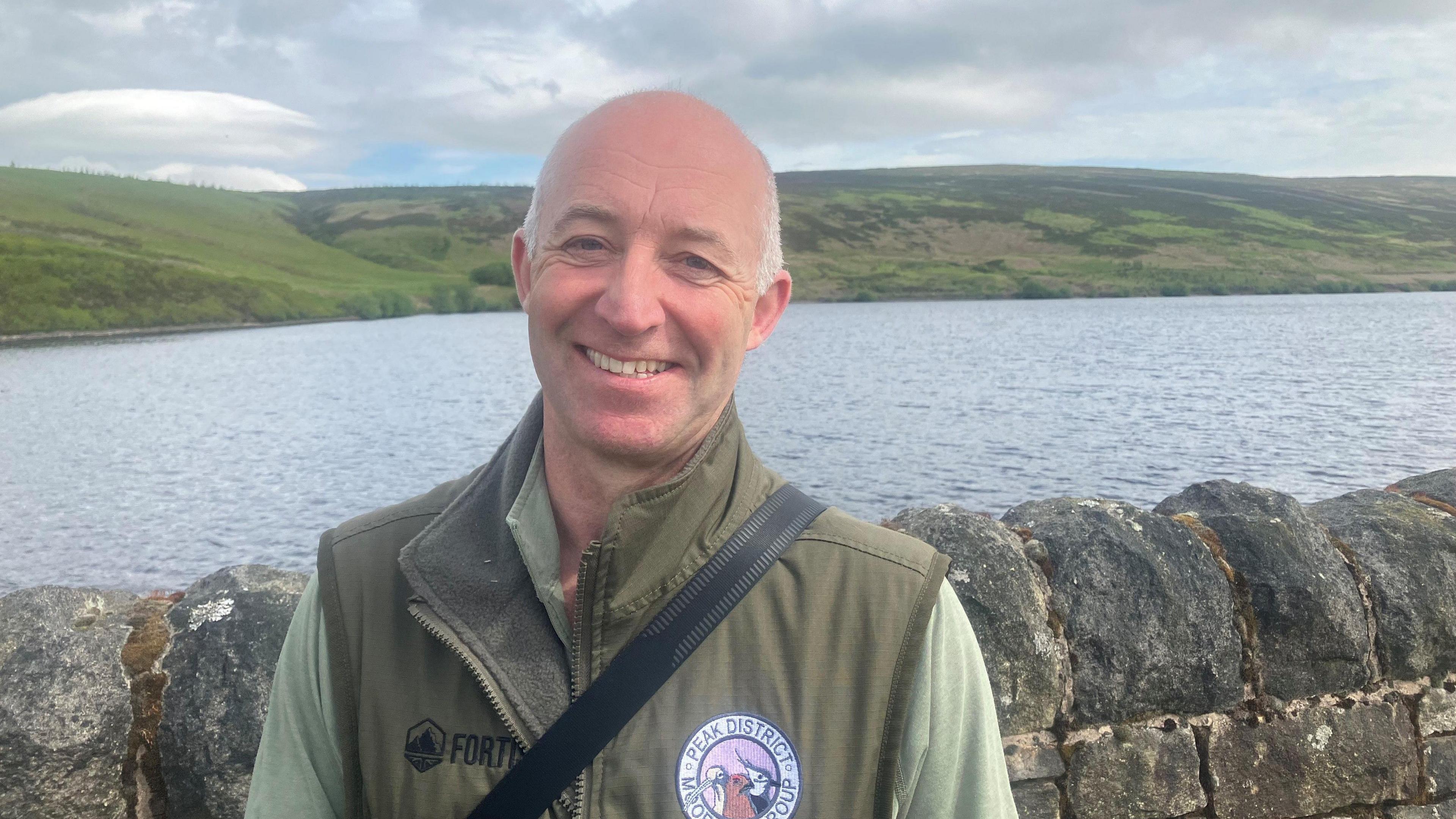
Richard Bailey is from the Peak District Moorland Group
Landowners have also been trying to prevent moorland fires from spreading.
The work involves cutting back heather to create a "fire break" and carrying out controlled burning on the moors.
Richard Bailey from the Peak District Moorland Group, which includes grouse moor shooting estates in the national park, said: "The conservation work creates a mosaic of mature heather, young heather and bare areas.
"It benefits wildlife and ticks the box for wildfire mitigation".
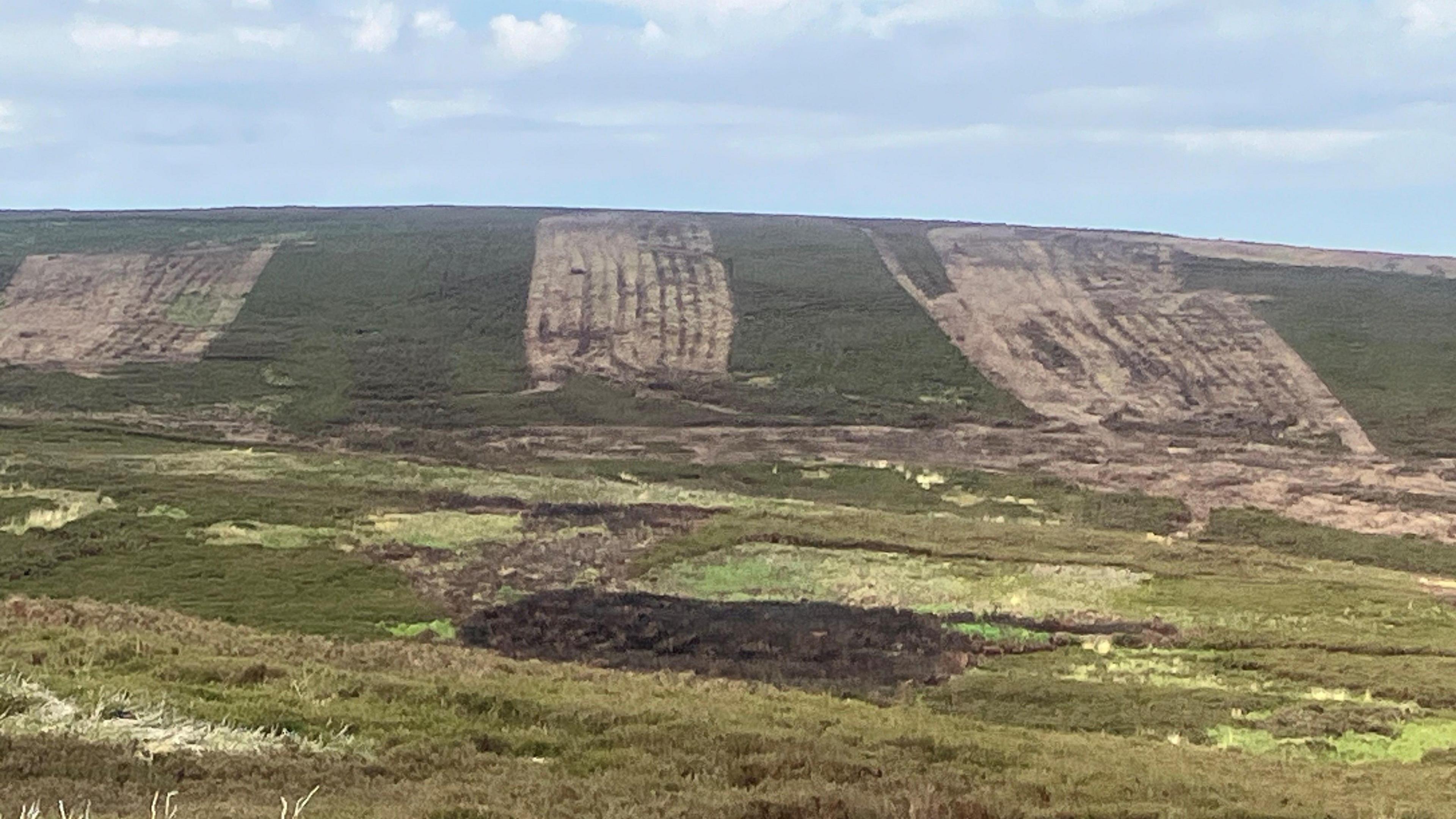
Fire breaks have been created on the moors above Stalybridge to prevent wildfires spreading
The impact of the conservation work on the moorland is to create a patchwork landscape of different shades of brown and green.
Mr Bailey added: "Some people are saying we should re-wet the moors but the sun and the wind will quickly dry that out.
"Wetland areas are important because they harbour insects - but we need more management of vegetation.
"There needs to be a diversity of landscape which is more resilient to the spread of wildfires".
In the summer of 2018, firefighters from 20 different brigades were drafted in to help tackle the two huge moorland fires which burnt for several weeks.
Firefighters spent more than a month battling a huge fire covering 18km sq (6.9 sq miles) at Winter Hill, near Bolton.
The Army was drafted in to help Greater Manchester crews deal with a blaze on moorland above Stalybridge, 30 miles away from Winter Hill.
Animals and birds which live on the Peak District moorland include lapwings, golden plovers, curlews, red grouse and mountain hares.
Related topics
Related Stories
- Published26 June 2018
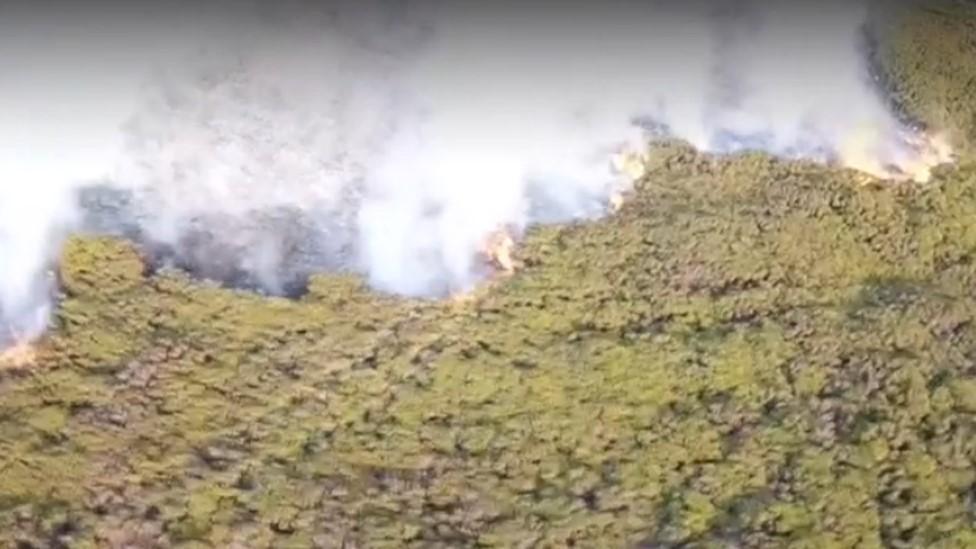
- Published17 February 2019
